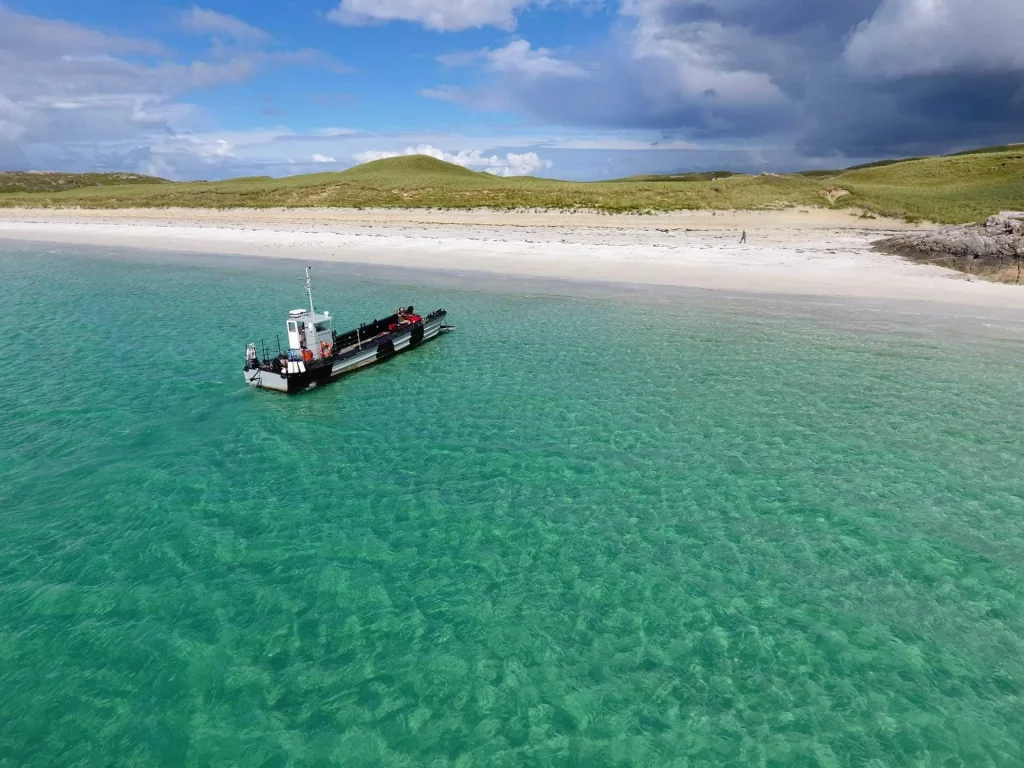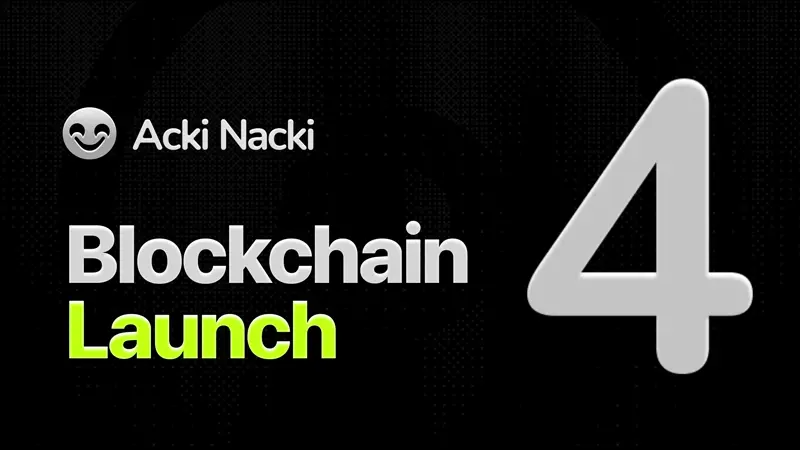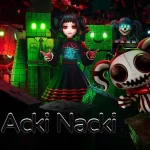Some places you rewild with spreadsheets. Taransay you rewild with wind, salt, and a little stubbornness, and with a blockchain that does not cry when you ask it to do real work.
The island that ran out of leaves
Taransay sits off Harris in the Outer Hebrides.
In 2011, Adam and Cathra Kelliher bought it, and a few years later removed the sheep, ending a long period of intensive grazing.
The current push is to roll the land back toward a pre-grazing mosaic, the kind people last saw in, yes, Bronze Age weather windows. The Guardian
Red deer still roam. Historic counts show roughly ~200-225 animals on Taransay’s unit in 2014–2017, enough to keep young trees nervous and botanists awake.
Wider Harris holds >1,000 red deer, and they wander to Taransay when the weather tells them to. Translation, fencing and culling plans matter. Outer Hebrides
The habitat targets are classic Hebrides: machair grasslands, dunes, wet peat and blanket bog, heath, and sheltered valley woodland.
Machair is rare and uniquely North-West, a calcium-rich, flower-mad grassland that grades into bog and lochans as you move inland. It exists basically here and in Ireland, and it is spectacular when managed right. Wildlife Trusts
Work on the ground, but with receipts
Who is doing what:
- Restore (Restored Land) is leading ecological management with the owners, pushing Taransay from overgrazed emptiness toward native woodland and richer machair. Their notes are blunt: “the sheep had eaten even the heather down to the ground.”
- rePLANET lists Taransay as a Biodiversity-Led Project. Their projects use the Wallacea Trust methodology, defining a unit as “a 1% gain per hectare in the median value of a basket of metrics” tailored to the habitat. Peer review is provided by the Biodiversity Futures Initiative. This is boring in the best way, because it gives you numbers you can audit.
- Baseline work is ongoing. The shape is familiar in modern rewilding: measure, set targets, then measure again, or do not talk about targets.
Dapp Whisperer:
Nature loves paperwork when paperwork forces humans to shut up and measure.
The part where it all goes on-chain
Now the fun part. The whole pipeline, from field data to credits to secondary trading, runs on Acki Nacki via GOSH tooling and Integrity Certificates.
- End-to-end flow: registration, decentralized scientific peer review, MRV, issuance, registry, marketplace, and revenue sharing to local communities. That stack is documented by GOSH and Integrity Certificates, and it is the bit that kills the old “just trust us” market mood.
- Where the credits live: Issuance and registry are handled with Integrity Certificates, and trading happens on GEX, a decentralized, gas-free limit-order-book commodities exchange. Credits as commodities, not vibes.
- Why on Acki Nacki: the L1’s consensus is built for fast finality and parallelization, not cope and prayer. It uses probabilistic PoS with a small, randomly selected verifier set per block (the “Acki-Nacki”s) plus attestations. The math keeps attack probability tiny while keeping throughput high, and parameters are adjustable to balance security and speed. In English, “we can scale MRV and trading without melting.”
- Token plumbing: two-token design. NACKL secures the network and accrues value from usage. SHELL is the computation token for fees, designed to be cheap so you can actually run science and markets on-chain without selling a kidney. Rewards are paid for network participation, with mobile verifiers adding extra security.
Dapp AI:
Translation: no, we are not pinning a seven-figure restoration to a memecoin gas spike. Also, we dislike MEV. The protocol design dislikes it too.
What a “Taransay biodiversity credit” actually means
Under Wallacea’s basket-of-metrics approach, one unit equals a 1% median gain per hectare for the chosen taxa and indicators for this ecoregion. You baseline, you manage, you measure again after 3–5 years, and the delta mints the units. That unit can be stacked with carbon where appropriate, but it stands on its own. Replanet
This matters for machair and blanket bog. For machair you care about plant richness, pollinator abundance, nesting birds. For peat, you care about re-wetting, sphagnum recovery, and water tables, because peat is a carbon vault when wet and a smoke machine when dry.
The supply chain of trust (and why bureaucracy hates it)
- Decentralized peer review: protocol artifacts, datasets, forms, and versioning are stored in git… on-chain. Review is transparent. If it changes, the diff is visible. If it breaks, it breaks in public.
- Registry and market: credits are minted, registered, and tradable. A primary sale funds the work, a secondary market widens participation beyond a small circle of NGOs and glossy brochures. Rules and cash flows are encoded. Benefit sharing is not a press release, it is a contract.
- Integrity context: the broader market is converging on “high-integrity” principles, from WEF and the Biodiversity Credit Alliance. Taransay’s stack aligns cleanly with that direction, because transparency and verifiability are the whole point.
Reality check, then optimism
A few facts worth stating cleanly:
- Sheep: Taransay was run as a sheep farm, but sheep were removed in 2019. Public sources do not confirm “nearly 1,000” head on the island immediately before removal, so treat that number as anecdotal. The direction of travel is clear though: grazing pressure dropped.
- Deer: place-based counts in 2014–2017 show ~200–225 on Taransay’s unit, and >1,000 across North Harris (with animals moving between Harris, Taransay, and Pabbay). Management will need to be adaptive.
- Trees: “one surviving tree” makes a good story, but the documented reality is simpler and still harsh, “virtually treeless” with limited or failed past planting without protection. The aim is sheltered dwarf woodland in leeward valleys, not an instant Caledonian forest.
And still, look at the arc. The owners removed sheep, hired serious ecological managers, partnered with a credit developer using an opened methodology and academic review, and wired the whole thing to an auditable, high-throughput L1 with a real commodities exchange. That is not a brochure. That is a build.
7) What success looks like, five years out
- Machair with summer color and birdsong that drowns your phone.
- Peat that stays wet, locking carbon while nobody makes a speech.
- Deer herds healthy, but not bulldozers with antlers.
- A live credit registry with transparent baselines, peer-review diffs, and clean secondary trading.
- Local benefit sharing that updates on-chain, so nobody has to ask “where did the money go.”
Appendix: How the Taransay → Acki Nacki pipeline runs
- Baseline & design: Restore + rePLANET scope metrics and habitats, set baselines (Wallacea).
- On-chain peer review & MRV: Project artifacts versioned on GOSH, reviewed openly.
- Issuance & registry: Integrity Certificates mints biodiversity credits and records them on-chain.
- Market: Primary sales + GEX secondary market for credits as commodities.
- Revenue share: Smart-contracted distributions to local stakeholders.
- Security & fees: Acki Nacki’s consensus + two-token economics make this viable at scale.
Sources and further reading (full URLs)
- https://www.replanet.org.uk/project/biodiversity-led-projects/taransay-island-rewilding/
- https://www.replanet.org.uk/project/biodiversity-led-projects/
- https://www.replanet.org.uk/measuring-biodiversity-gain/
- https://www.biodiversityfuturesinitiative.com/
- https://restorenature.com/wild-taransay-project-scales-up-with-a-call-to-wilder-investors/
- https://restorenature.com/restore_portfolio/wild-taransay/
- https://www.theguardian.com/uk-news/2024/feb/17/islanders-on-castaway-2000-site-joyed-return-to-bronze-age
- https://www.savills.co.uk/insight-and-opinion/savills-news/349855/project-taransay
- https://www.visitouterhebrides.co.uk/see-and-do/red-deer-glen-langadail-p530191
- https://www.deer-management.co.uk/wp-content/uploads/2018/04/Part1LandHDMPInfo1.pdf
- https://www.nature.scot/landscapes-and-habitats/habitat-types/coast-and-seas/coastal-habitats/machair
- https://www.wildlifetrusts.org/habitats/coastal/machair
- https://docs.gosh.sh/integrity-credits/overview/
- https://blog.gosh.sh/p/nature-needs-positivity
- https://gosh.sh/tools
- https://integritycertificates.com/
- https://www.weforum.org/publications/high-level-principles-to-guide-the-biodiversity-credit-market/
- https://en.wikipedia.org/wiki/Taransay





